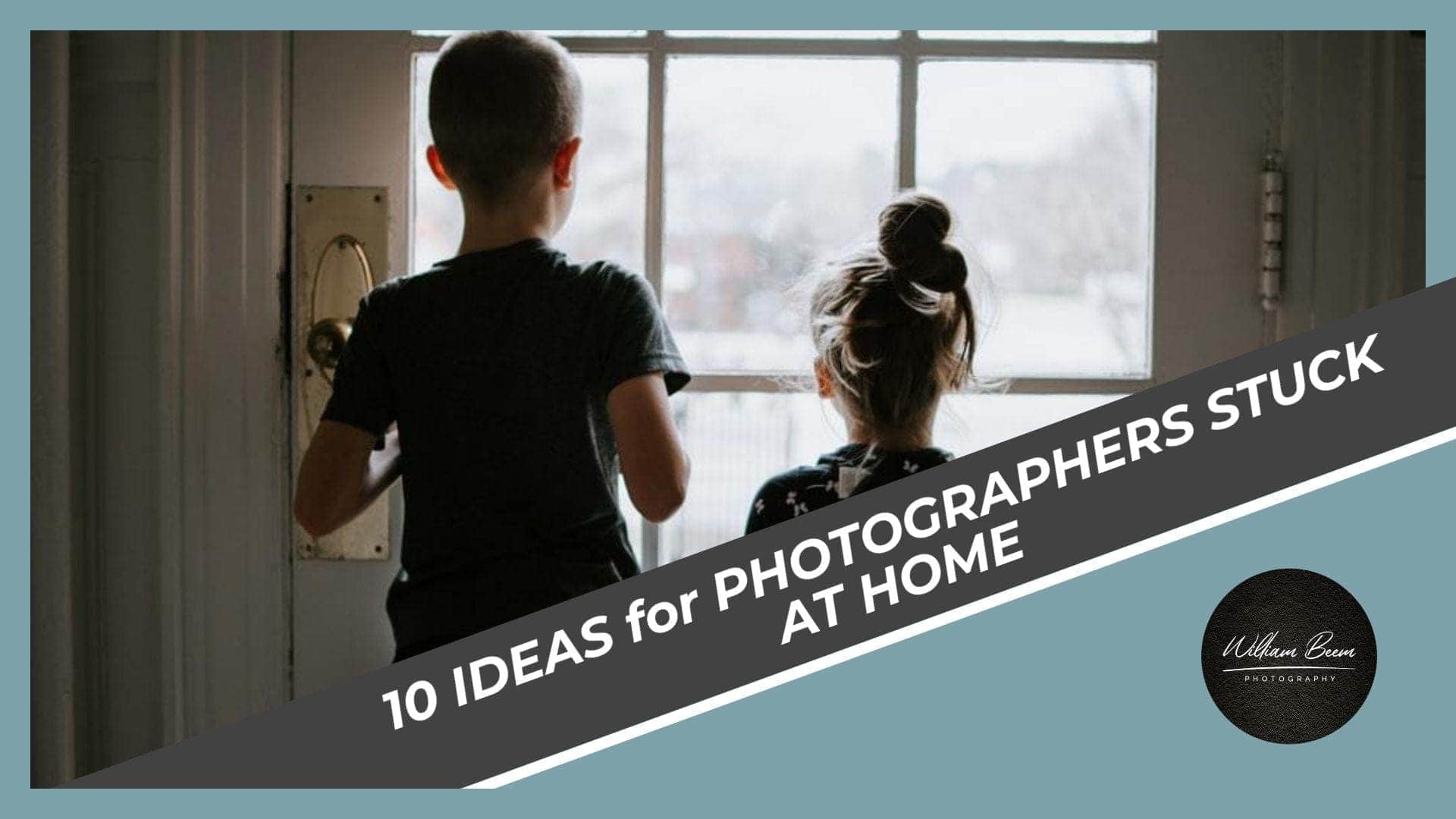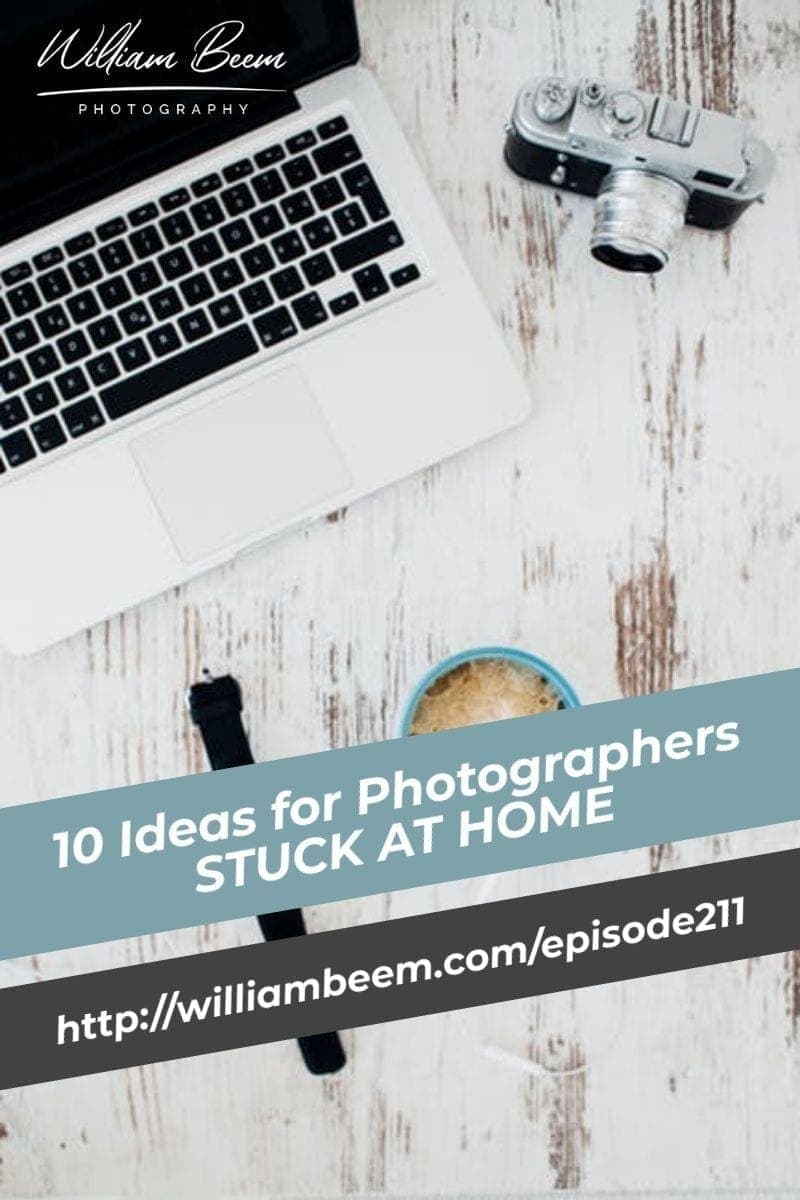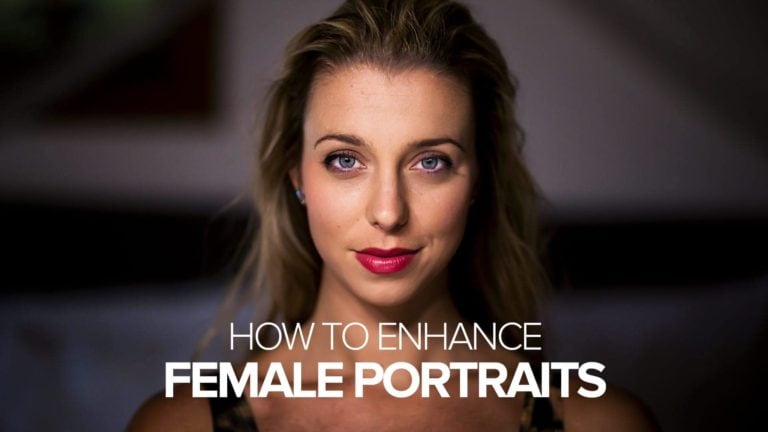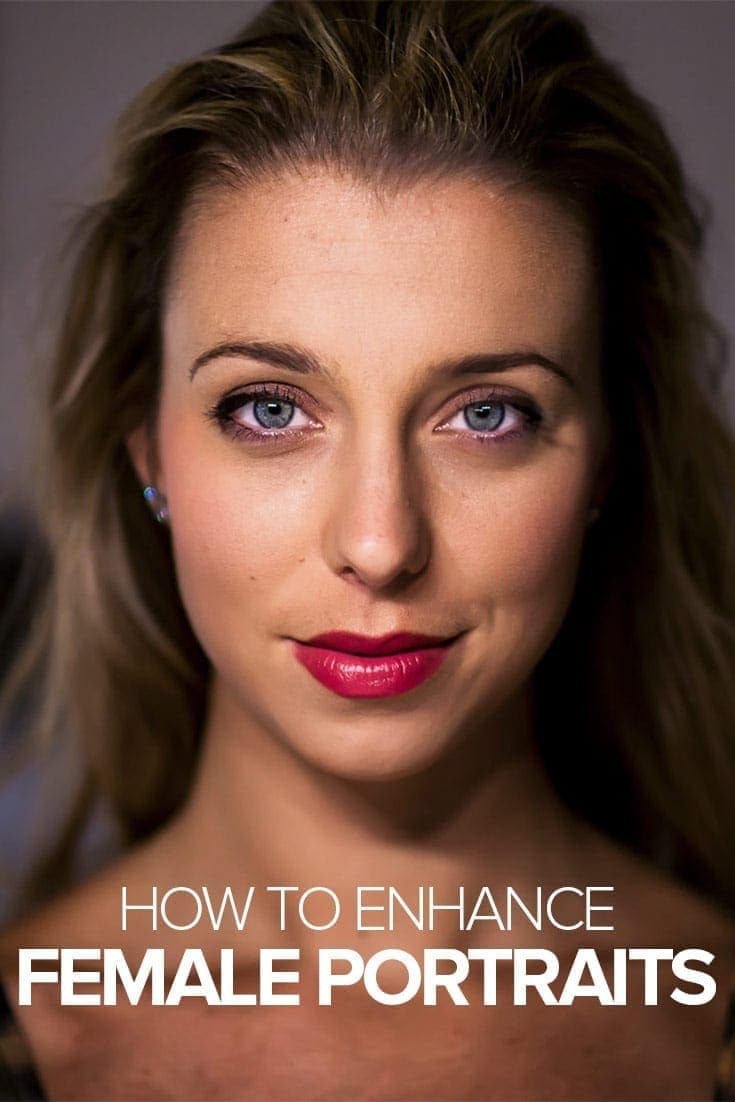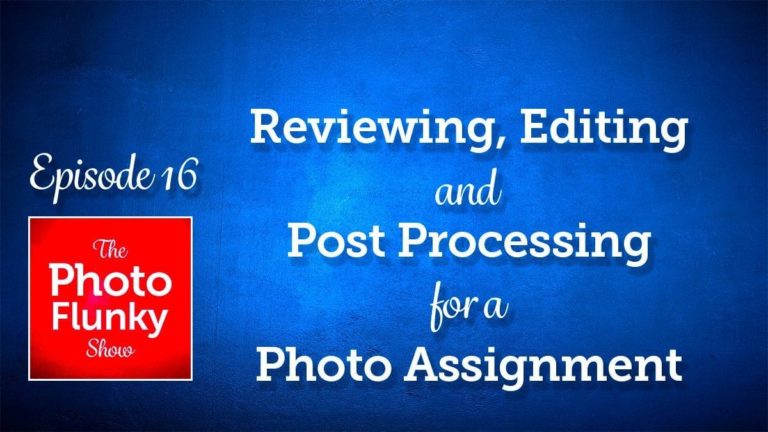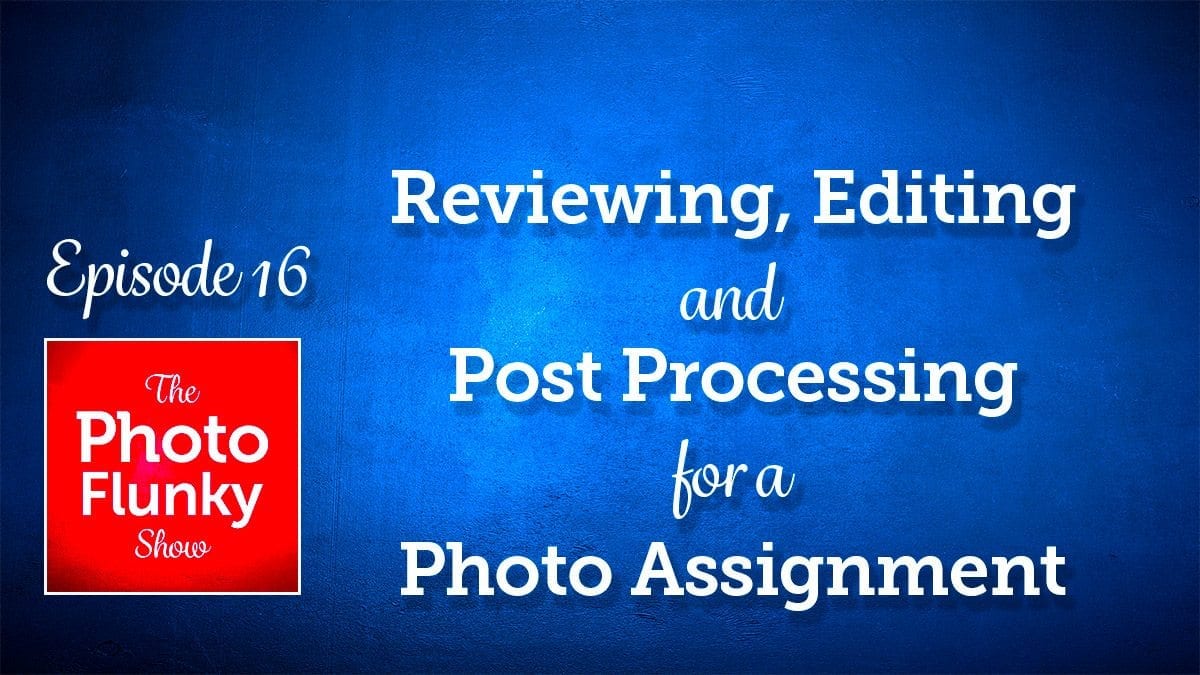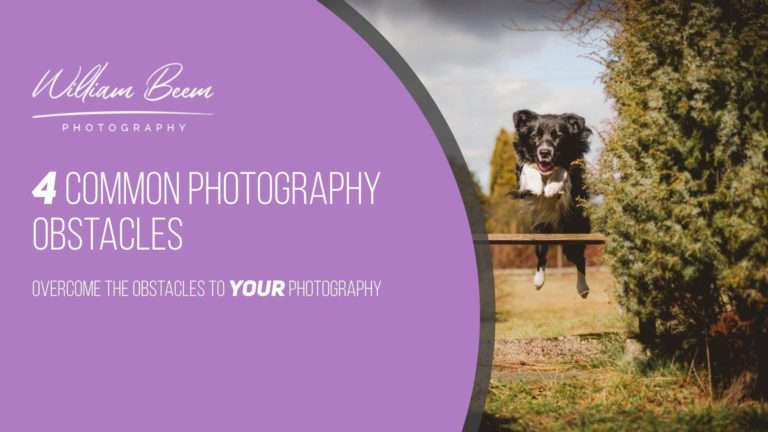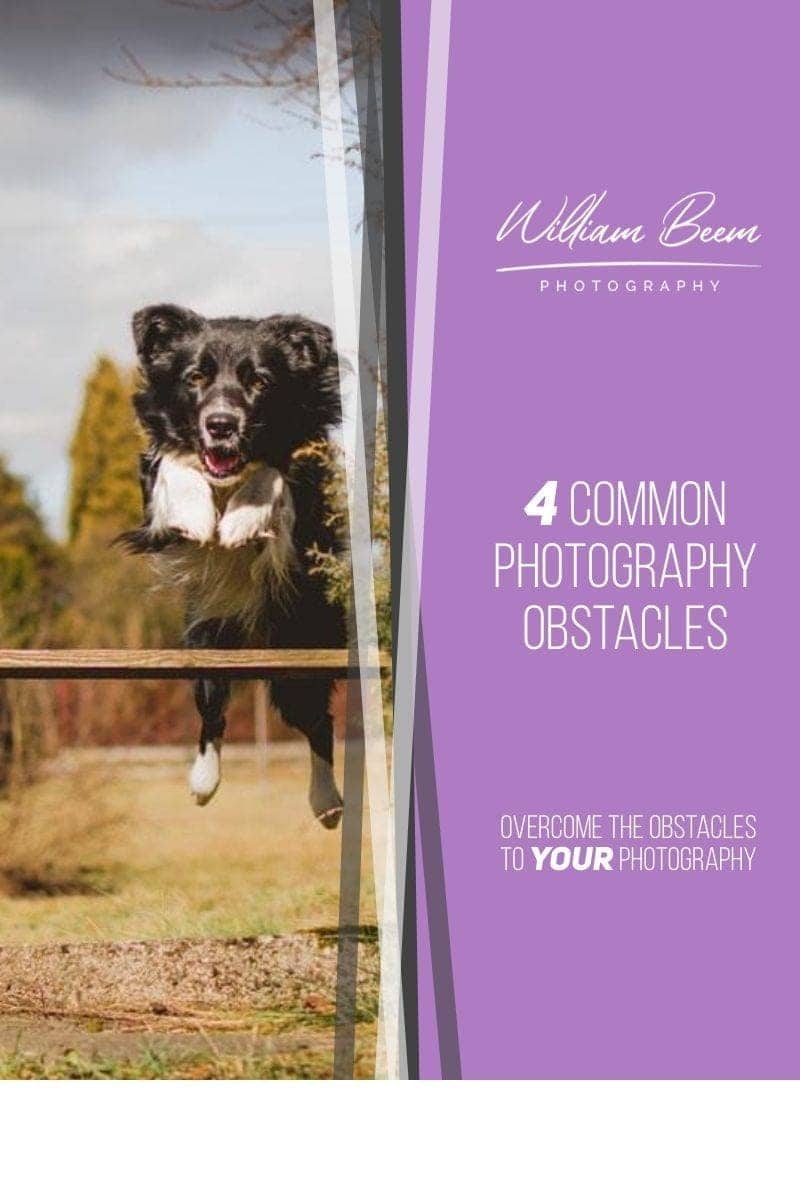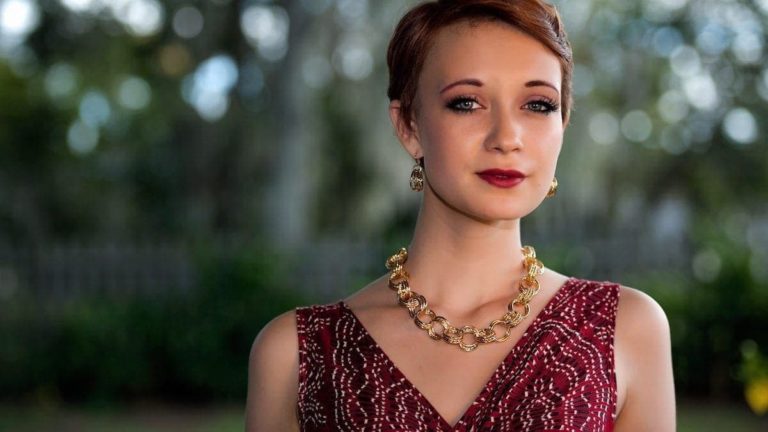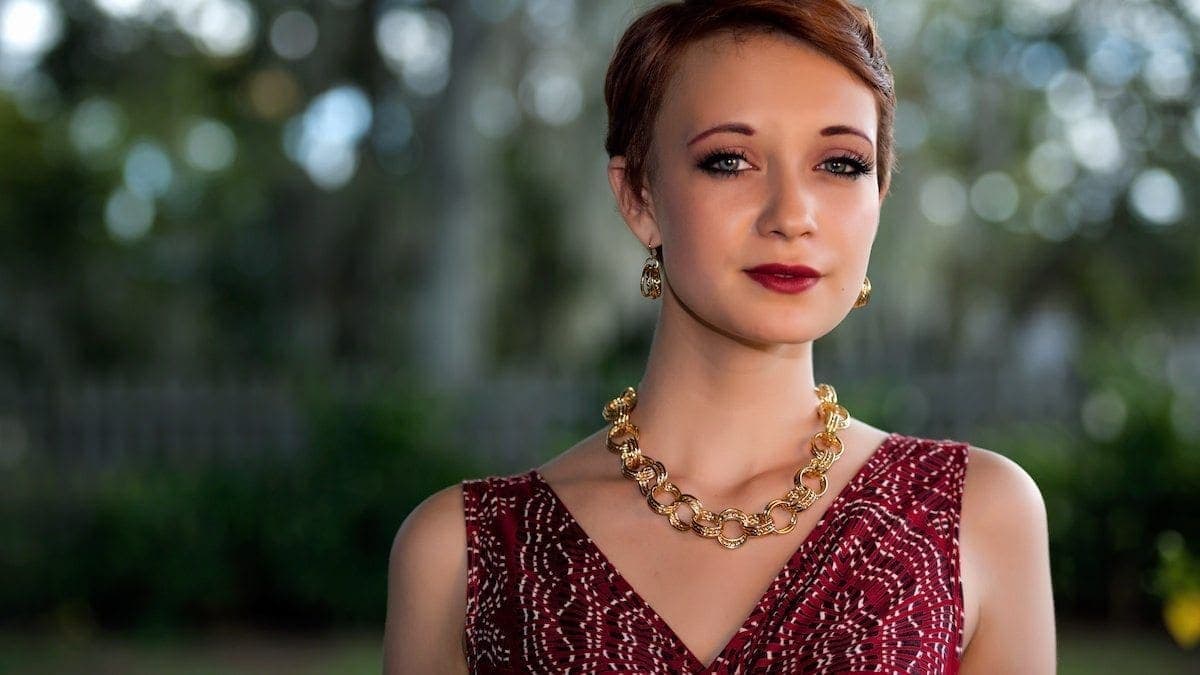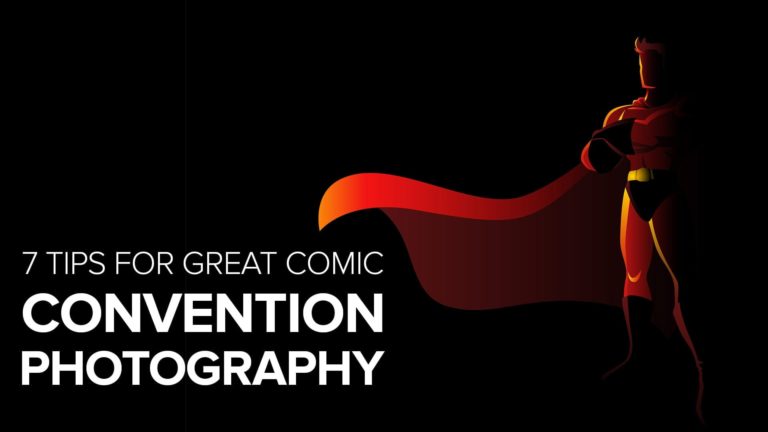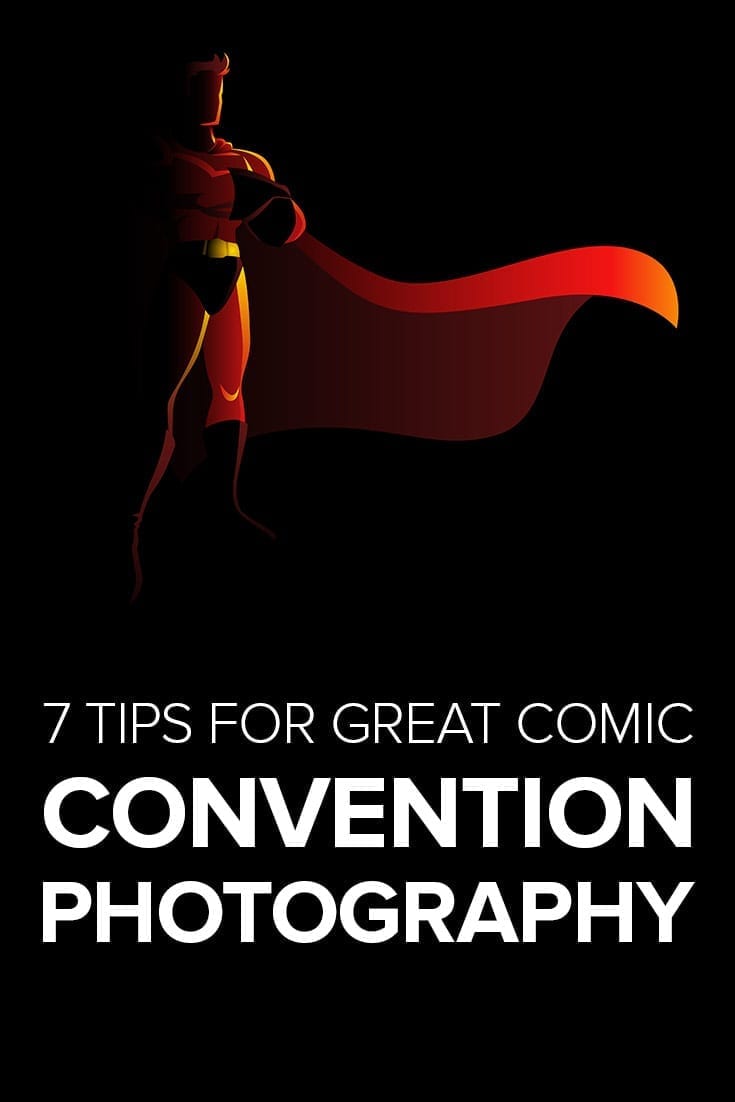Affiliate Disclosure: We earn a commission if you purchase through one of our links at no additional cost to you.
It sucks when you’re stuck at home. For most photographers, it sucks even more because we need to get out to see interesting locations, collaborate with others, and even help people capture their important memories.
There are times when you just can’t get out of the house, though. So what are you going to do?
We have a few ideas of how you can spend your time stuck at home.
10 Ideas for Photographers Stuck at Home
Just because you can’t get out of the house doesn’t mean that your photography is at an end. Check out our list of potential ways to engage or improve your photography below.
1: Review and Organize Your Archives
I posted a question on my Facebook Page about what photographers were doing while things were shut down. Alan Hess responded with a great idea to review and work on your archives.
Remember when you said you need to get around to organizing your photos or processing some older images? Being stuck at home is a good time to work on those archives.
It’s a good time to organize your keywords in Lightroom, too.
2: Order Prints for Home
There are a lot of photographers who never get around to printing and displaying their own work. I’m sad to say that I used to be one of them, where Lee always had family photos and portraits on her walls.
We started hanging up some of our work, and I have to say, I like it! I had a few photos in my home office, but now we’re printing things and hanging our photos around the house.
If you’re going to take some time to go through your archives, maybe you want to spend some time deciding which photos would make great prints to hang at home.
3: Learn Something with Online Training
Being stuck at home is a great time to learn more about your photography and post-processing. My go-to resource for photography training is KelbyOne.
KelbyOne is the perfect resource for anyone looking to improve their photography skills.
Whether you're a beginner or a seasoned pro, there's something for everyone at KelbyOne. They offer courses on all aspects of photography, emphasizing Photoshop and Lightroom for post-processing.
Professional photographers, led by Scott Kelby, offer a new course every week, so you can always keep your skills fresh. And best of all, membership gives you access to everything they offer so that you can learn at your own pace and improve your photography game.
KelbyOne offers Monthly and Annual pricing plans, so the plan that works best for you.
Get 10% Off the Pro Annual Subscription with Code WBEEM10, Only at KelbyOne!
Coupon Code: WBEEM10
Get 10% Off the Pro Monthly Subscription with Code WBEEM10M, Only at KelbyOne!
Coupon Code: WBEEM10M
- Excellent training for photography and photo editing
- Wide range of topics covered
- Multiple instructors
- Discounts and Perks for KelbyOne Pro members
- Free plan available
- You can purchase a course without a membership
- A few instructors are better at doing than teaching
- With years of developing courses, some are out of date.
You can find a lot of resources from individual photographers and trainers. Matt Kloskowski (formerly of KelbyOne), Serge Ramelli, and others provide great training courses for you.
4: Attend a Free Webinar
Speaking of Matt Kloskowski, he’s providing free webinars for photographers during the great COVID-19 lockdown. Check out his site (link below) for some free training, and he’s also offering 50% discounts on his courses.
5: Check out Photographers on YouTube
YouTube is a bit of a hit-and-miss for photography training. I think it’s great for individual topics, but it’s not as organized or curated as a course.
However, sometimes you need something other than a technical tutorial. Zack Arias is back on YouTube and providing some wonderful insight that helps you as a photographer and creative person, rather than just doing yet another how-to video.
6: Setup a Home Studio for Family Portraits
You can create a home studio with a few resources.
When you’re stuck at home with friends or family, photographers have the power to use their skills to help everyone have a good time. People enjoy goofing off in front of a camera, dressing up as characters, or even just making faces.
Yes, you can work on your fine art skills while you’re stuck at home. It depends upon how you relate to your family and friends. Maybe you can get the kids into a unique story or just let them burn off some energy as you capture the fun.
Don’t forget about your pets, too!
I have a link to my article on setting up a home studio in the resources below.
7: Practice New Techniques
How well versed are you in using flash? Have any new equipment that you need to test? Being stuck at home is a perfect time to break out your gear and do something new or interesting.
If you’ve ever thought about using gels on your lights, try aiming them at walls with different colors. Change the flash power or flash distance to see how it looks.
This is a great time to explore your photography, so you have new skills when you get out of the house.
8: Sell Old Gear on eBay or other Markets
If you’ve been in photography for a while, it’s likely you have gear that you no longer need or use. Why not make a few bucks and sell it on eBay or some other online market?
In my case, I have a few Elinchrom BRXi 500 lights that I don’t use. Nothing wrong with them, and I loved those lights. However, they need to plug into electricity, and I’ve moved on to the Adorama Flashpoint (Godox) brand because they’re battery-powered.
Someone getting started and stuck at home would probably love to get my Elinchrom lights at a decent price.
Maybe this is a good time to do some shopping if you need discount gear.
9: Clean Up That Mess Where You Store Your Gear
Speaking of old gear, this is a good time to clean up that mess. If you’re an organized photographer who has everything in its place, I envy you.
Unfortunately, I’m one of those people who starts to collect my gear for a photo session and then storms around cursing because I can’t find this piece or that.
Being stuck at home is a good time to get organized and clear out the clutter.
10: Deliver Those Old Photos You Promised a Long Time Ago
When I have a client or model, I’m pretty good about delivering photos in a timely manner. That doesn’t seem to be the case for family photos, though.
Do you have some older photos that you promised to share but never got around to developing or delivering? If you’re like me, this is a good time to make good on those old commitments.
Time Stamps
2:43 – Work on your archives and get organized
6:10 – Order prints for your home
7:55 – Take an online course
11:40 – Take a free webinar from Matt Kloskowski
12:10 – Watch other photographers on YouTube, like Zack Arias
12:32 – Set up a home studio for family portraits
12:50 – Practice new photography techniques or work with lighting
14:20 – Sell old gear on eBay
14:57 – Clean up and organize your photography gear
15:56 – Deliver those photos you promised a long time ago
Transcript
Every once in a while things come along and you're just stuck at home. You can't get out. Could be because of the weather. Could be because of social requirements. Maybe you've got yourself arrested and you have a stay at home order or maybe it's just a strange little social virus that's going around. Whatever the case. We've got a list of ideas for photographers who are stuck at home and that's what we're going to talk about today on.
I like your picture. I'm William Beem. Welcome to I Like Your Picture, the show that helps you improve your photography with visual storytelling. What is visual storytelling? It's a method of approaching your photography with a knowledge of who you're trying to serve with your photos and what emotion you want to make them feel. We encourage you to concentrate on your subject light and background to create a photo your audience loves.
I'm glad you found us. Hi, my name is William beam. Hi, my name is Lee Beem. We want to help you with your photography at home and there's a number of things that you can do if you are stuck at home for any particular reason. It's not just one reason. Snow is probably going to be the most common one. I think we're,
in our case in Florida, current games, it's like we get, you know, probably at least once a year we get something where we're just kind of stuck in for like a big all day rain soaker or something like that. It's not really the hurricane that they threaten you with. There's always some reason that you're stuck at home. So we want to come up with a few ideas that may be able to help you out.
So we want to help you understand how you can improve your photography from home. Maybe get yourself organized or involve your family and friends. You don't have some fun with it. But before we talk about that, I wanted to talk about our shows sponsored for this episode. This episode is sponsored by canvas, discount.com they specialize in producing customized, high quality wall decor and photo canvas prints.
So please check out canvas, discount.com I love printing canvases and that's going to be part of our stuff is we're going to be talking about printing so we can mention we've got a number of canvases around here as well. Yeah, there's actually a couple of them sitting right behind me, but let's go on and just kind of throw out a few ideas of things that you can do at home.
And I put this out on my Facebook group a while back, like you know, people were getting, they couldn't go out and do photo shoots anymore. And I said, you know, what do you do? And Alan Hess, this know a friend of mine. He taught me at a concert photography three times that Photoshop world three times. I failed to win.
There's a constant, there was, I look, I had a wonderful time. I really enjoyed the concert photography class there and I went off and did a little bit more concert photography. Found out this is not going to be my thing. And, but they always had a contest. Like, you know, whoever that you know that takes shots, put your best shots forward.
I was voted on by the audience. I never won, but that's okay. That's why you don't know me as a concert photographer. But Alan has responded to me and he said, you know, work on my archives. It was the first thing that came out and there were a few other suggestions, but you know, we all, if we've been shooting for a while,
we've got a load of photographs that are just sitting there. It probably hadn't been touched, hadn't been reviewed. Maybe they were passed over for something that was more immediate in need. Or maybe you thought it looked better, but now's a good time actually to get to go back through your archives, get rid of the stuff that you don't want, and look for those hidden gems that maybe there's something there that you can use.
I don't really have any, I know Lisa Lee doesn't have archives. I mean her method is when she imports, she does not import everything on the card. I'm done. I'm done. But tell him exactly what you do. I kind of, you know, I take a lot of photos. Um, most of the time when I'm trying to get a shot,
it takes multiple shots before I think I have one. Then I'll do some with different compositions and you know, maybe some for different crops. And once I import them, I kind of scan over the thumbnails. I try and make them a little bit large pre imports in Leitrim and then I take a look at them. And the ones that I like the composition,
I select those. I kind of zoom in to make sure that at least they sharp where I want them to be sharp. And if those are the ones, those are the ones that get imported. Then from the one second important that I've imported, I'll choose, you know, if there are two or three from the same set, um, I'll pick the one I like the best and that will be it.
Once I'm done, I don't need them anymore. And for me it's kinda like going and shopping for a deal. And you agonize over it for a long time. Once. Once you've made your decision, you've made your purchase. If you keep going back to see what else you might've missed, I think you just kind of taught yourself. Sometimes you need to just go with what you have.
Nobody else knows what other photos you took and honestly, after a while, now the do you, so why go? You know, torture yourself with what might be there and I know that it depends what kinds of footage you take, but There's, look, there's some truth to that because I have over 80,000 photos in my library. That's after I've called and gotten rid of some photo shoots where I know I'm not going to do anything else with him.
Yeah, he felt locked in for a few years. I've, look, I've got, look, I have something to do when I'm locked at home. You don't. I find stuff, but I've got photos in there that I took every once in a while I go back and look through and said, I don't know why I'm keeping these, especially some of my older earlier portraits.
I looked at them and I thought, this is not representative of the work I do today. These are things I haven't shown. I'm never going to show them. There's no point in me keeping them. So you can free up a lot of disc space going through reviewing your archives. Also you can find some of those hidden gems in there every once in my life through and said,
Oh, I never did really develop a process this one. Or maybe there are some new techniques I have for post-processing. Uh, you know what, this would work better on this photo than what I did, you know, back in the day. Yeah. So going through those archives and not only just reviewing them and maybe deleting some space or you know,
reprocessing things, it's a good time to get organized and we're going to talk about that as well with your gear and your physical stuff. But idea of reviewing those archives, make it easy to find stuff. And some people, you know, when it comes to organizing your archives, some people like keywords, some people don't like yours at all. I'm kind of a fan of keywords.
But whatever your structure or strategy is, this is a good time to say, you know what, this thing shouldn't be here or it's, I never find it. Now's a good time to go ahead and put it someplace where you can find it. Absolutely. One of the things we were talking about before with canvas, discount.com is order prints from your home and I've was looking at our walls.
We had a few things that were up and Lee's really repainted the interior. He's done a lovely job in my office. I've got all my stuff up on in my office. I'm really happy with that. And we hung up, uh, an aluminum print I had from image wizards that's probably been in the box for three or four years. What that was here before it was like when I met you,
that's a lot longer. All right, six years more. Seven maybe. It looks really nice now though. That's on the wall, but I noticed we've got a lot of wall space now that we just haven't need to fill things up. Before Lee moved over here. She told me her home had photographs all over the walls all over the place and I've actually been horrible about printing.
I was shocked. I mean I print everything So we're going to be ordering some prints from home and we've got a number of canvases. There's, there's one actually sitting behind me that used to hang up on above the mantle on our fireplace, but we replaced that with a big waiting photo that I got Lee for Christmas. Yeah, it's beautiful. And,
but this is, I'm kind of getting into this now. A lot of photographers really don't do a good job at printing and I was one of them. But now that I'm seeing these prints hanging up on the wall, I'm thinking I want more of them and this is a good time to go through and find out how do you want to decorate your house?
Is it going to be with your own photography? Some people actually like photos and prints from other photographers. Some people want their family photos around rather than maybe their fine art or you know, whatever kind of work that they like to do for photography. But it's a good time I think to go through and get those prints. So there's probably a lot of discounts that I'm seeing flying around on almost everything.
So I bet you if you check with your favorite printer you might be able to find a discount at this time till next time is to take an online course. And I have got a number of courses that I've purchased in the past and I've started them but didn't always finish them. So to me this is a good time. And also I am a big fan of Kelby one so if you want to check out Kilby one go to William beam.com/kelpie
one I think you get about a $10 discount if you use that link and you don't necessarily have to pay to check out Kelby one if you go there, they have a number of courses for free. They have different programs, whether you want to go to an annual, do an annual membership or a monthly membership. I'll put links in the show notes so you can see the differences in the pricing between the annual membership in the,
in the monthly membership because the discount that you get I think is different between the two. But I will go ahead and put those in the show notes so you can take a look at that. Now Lee, you don't really do a lot of online courses for your photography. I really didn't. I watched an occasional video. Do you know what? I get bored.
I am very much a hands on person when it comes to creative stuff and I am probably the worst with kind of skimming through something and then figuring it out on my own. But it's just the way I learn and this is not, um, I would say that I make an exception rather than the norm. And this isn't always the case. There are times when I really just need to bury myself into something and I,
and I do. But this, the idea is still is to learn something. We've got a few other things to talk about learning, but what's your favorite way of learning photography when you've got time, do you wait until you have a problem that you want to figure out or a new style of photography that you want to do or do you just learn something that,
okay, maybe I'll try that. I usually see something interesting. All right. I just get a random idea and then I'm, Oh I wonder how how you do that and then I'll go and you know, go and search for it and see if I can learn. I really, what I look for is starting points and I like to get started to see what problems I have before I go in and troubleshoot them.
Um, so I'm very much a practical, you know, I'll start with something and then figure it off. Along the way. When you started your flat lay photography and you evolve that over time, yeah. Were there points where you said, okay, I need to learn how to control the lighting? Cause I noticed that you started off just taking your photo straight down,
then you started putting up kind of light barriers. Um, that happened when it was really the routine of my day because I was taking them at the, at the dining room table. Um, and although it's next to a window, uh, I started taking them during the day in the morning and the light was kinda, it wasn't that bad, but that was before the trees came down and we had more light coming in the kitchen.
But then my routine changed and I was actually doing things kind of after dinner now by this stage we had the ceiling lights on and the blinds closed. There was no light. I mean it was dark outside and all of a sudden I had serious issues with that and it was driving me nuts. So, um, yeah, I had to learn how to work around that.
And eventually I just learned that if I cannot get my photo done with daylight, I'm not gonna take it. And that's when that happened. When we got more light to the dining room, I started playing around. I really figured out as I went along. I honestly did not know it as doing, I was just thinking, there's a shadow here so I moved this or there's too much light here,
and then I'd kind of bend some foam board and something that you could do from, like you said, from the dining room table with the window light and just kind of practice and see how the light works and doing your own set design. It was a, it was a nice thing you could do from home. Yeah, you still do it. You did it before this little problem started up with everybody being stuck at home and now it's something that you can do pretty much anytime.
As long as you've got light coming through the window. I can have actually been very bad at it the past couple of weeks. I don't think I've put anything up in about two weeks, but that's just because of all the other product projects and this is what I do. You've got your gardening project and the nother thing I wanted to bring up was free webinars.
I just ran across a notice that a medical Skalski, you can find [email protected]. He's doing a number of free webinars and he's not even collecting email addresses. It's just basically he's putting stuff out There to share and teach and train while people are stuck at home. So that, uh, I don't know how long that's going to be going on. We're recording this at the end of March and you know,
he's doing that now. So hopefully when this comes out, it's certainly gonna be a few days that maybe you can find something from a macro Skalski if you want to look for some free training. And there's probably other photographers out there, I've noticed that Zack areas is, uh, got his YouTube channel going again. And what I like about him is it's not necessarily technical photography training,
it's more about kind of like the way we talk about photography as like you're the photographer, you're the creative vision. And I think he has some really good insights on how things work and it is definitely worth checking out. So look on YouTube for Zac areas. All right. Another one that we were talking about and we're kind of thinking about doing because our daughter needs her senior portraits,
is to set up a home studio and take some family portraits or even your pets. You can do your friends, your family, whoever you can get to come in your house or whoever stuck there with you. And also it gives you a chance. You can practice some new techniques. You know, maybe wanting to use some different lighting or maybe you need to practice with your off camera flash.
Maybe you want to put on some color gels, uh, do some silhouette stuff. We talked about flat lay photos already. There's a number of things that you can practice at home, but I really liked the idea of the family portraits because then it becomes kind of fun. It's not necessarily that you're trying to create the greatest fine art portrait that you have.
It's more about the personality. You want to capture the personality. You want to get some emotion and energy from these people. And I think that's, it's something you can share. It's not something that, you know, you're just directing a model and it's like, I need this specific thing and your director more like that. When you're working with your family and friends or your pets,
you're, you're having fun with them. And I think that's something really good to do when you're stuck at home And occasionally you're getting really frustrated with them. Yeah, just that also can make for some fun photos. It's also cool Grumpy kid and that it just get in front of the camera and they look just like I'm sitting here but I don't want to be.
And it's like, No, that's what it is. Thank you. Bye. When I said it, like you'd get frustrated. I've got lots of photos of Tovah. He loved smiling and posing for the camera. But there were times where I was trying to sort stuff out and you could see like if, especially if there were other family members in the photo,
everyone's smiling and she's standing there with her arms folded and this big pot on her face and years later you look at that. That was one of my favorites. Yeah. And I've got an article on my website about how to set up a home studio. I will add a link to that in the show notes. All right. The no thing is sell off your old gear,
go to eBay or whatever a service you'd like to use. If you've been to a photography for a while, you probably bought newer stuff. You've got older stuff you want to get rid of. I know I do. I was talking to Lee about some various things that we want to sell off on eBay every once in a while. I think it's good to batch those things and just kind of get them out.
I've got old motorcycle equipment. I've got my Ellen Krom lights that I'm probably not going to use anymore. I love them, but I've moved on to the go docs slides and there's a number of things. I think, you know what? This would be great for someone. Go ahead And sell that old great for our space. Yeah, that's the other thing is like then I should have kind of,
the next thing is clean up that mess where you keep your gear. That's like doing a Spartan race when you go into the garage, I mean minus the mud. Yeah, we've got everything. We've got my photography gear. That's kind of like when we walked from our kitchen to our garage. It's like all there to the right and when we want to come back in from the car,
we can almost trip over it every time. We're, when William backs the car up so that he opens the door, his door right up against the kitchen door and walks in. Um, anybody else who gets out the other side gets things from the trunk. Are people like me who used the back door to the patio. I climb over things, but it keeps me fit.
I call that smart planning. Just remember I was doing that for many years before you moved in here. So this didn't change. I didn't change. I didn't want to be inconsistent with who I was when we got married. You needed to know who you are. Married never complained. I'm the one who puts myself first. Something's wrong here. This last one leaves really going to love.
It's going to be deliver those photos that you promised a long time ago. Go ahead Lee. Tell him the story. Um, yeah. William takes photos and you, if you ever see them, it's not even, it could be a few days, it could be years and then you have to remind him that he took, the foot isn't he looks and he goes,
what foot is that? It's worse than that because I have a horrible memory. So yeah, this is kind of weird to me cause when I get stuff on my car, the first thing I want to do is get them into life and get them sorted because as far as I'm concerned, if they're important, they'll get them done within a week. If I haven't done them in a week,
how important are they really? In that case, they're going to get wiped out with next card. What's really embarrassing is this is something I'm doing for a client or for a model or someone I'm shooting. I'll get them out there right away. If it's something I've done for my family, I kind of think of it something I've done for myself and suddenly it's not as important.
Like my parents have been asking for our family photos from Thanksgiving 2017 I'm a bit behind, but I'm gonna have some free time coming up pretty soon, so I'll find a bunch of gems. Oh, you're not the only one. Well, I don't know, but I'm the one that's in trouble here. So yeah, clean up that mess all your old gear.
Deliver those photos for you promised a long time ago. Practice some new techniques, take some family portraits, you know, order some prints at home and review and organize. Those are kind of our tips for what you can do when you're stuck at home. Thank you so much for joining us on. I like your picture. This is episode two 11 so you can go to Williambeem.com/episode211.
You can find those links and resources that I mentioned in the show notes. Also, we wanted to bring up something. We've got the LR checklist for you. It is a Lightroom classic developer workflow. In other words, it shows You what is the right order to develop your photos so that you don't make mistakes, don't screw up, and you get the best results possible in the shortest amount of time possible.
Go to Williambeem.com/lrchecklist and you can get that for free. Thanks so much. We'll see you again next week.

